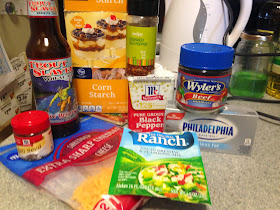Savory Harvest Pockets
1 box frozen puff pastry dough
1 sweet potato
1 small squash (your choice; I typically eat acorn squash)
1 C pecans, chopped
cinnamon
clove
salt
pepper
butter
 Thaw the puff pastry according to package directions.
Thaw the puff pastry according to package directions. Cook your potato and squash. If you're in a hurry, poke them with a fork and microwave them until tender. However, it's nice to roast/bake, because you get caramelization of the sugars and that much more flavor. To do this, peel and chop the potato, because it'll go faster that way, toss with a bit of oil, season with salt and pepper, and scatter over a caking sheet. Bake at 375˚F until brown at the edges. To roast the squash, cut in half, scoop out the seeds and pulp, and place skin-side down on a baking sheet. Place approximately 1 Tbsp butter in the center hollow of each half. Again, bake at 375˚F until flesh is slightly tender and browned at the edges. As you take it out of the oven, poke the flesh a few times with a fork and swirl the butter around. Allow the squash to cool, then carefully remove the skin and cut the flesh into pieces.
Cook your potato and squash. If you're in a hurry, poke them with a fork and microwave them until tender. However, it's nice to roast/bake, because you get caramelization of the sugars and that much more flavor. To do this, peel and chop the potato, because it'll go faster that way, toss with a bit of oil, season with salt and pepper, and scatter over a caking sheet. Bake at 375˚F until brown at the edges. To roast the squash, cut in half, scoop out the seeds and pulp, and place skin-side down on a baking sheet. Place approximately 1 Tbsp butter in the center hollow of each half. Again, bake at 375˚F until flesh is slightly tender and browned at the edges. As you take it out of the oven, poke the flesh a few times with a fork and swirl the butter around. Allow the squash to cool, then carefully remove the skin and cut the flesh into pieces. Toss the cooked squash and sweet potato pieces in a bowl with the pecans and a couple tablespoons of melted butter. Season to taste with salt, pepper, cinnamon, and clove. Be careful! A little bit of clove goes a long, long way. The mixture (which will be your filling) won't be sweet.
Toss the cooked squash and sweet potato pieces in a bowl with the pecans and a couple tablespoons of melted butter. Season to taste with salt, pepper, cinnamon, and clove. Be careful! A little bit of clove goes a long, long way. The mixture (which will be your filling) won't be sweet.Take out the puff pastry, and cut the sheets into 4 sections each. (I assume most puff pastry dough comes in the same size… I use Pepperidge Farm's puff pastry, though, if it makes a difference, and my sections are usually 5" by 8".) You can widen the sections slightly with a rolling pin, if desired. Place a portion of the filling on half of the section, top with a dollop of butter, leaving approximately half an inch of space on three edges (the imaginary line in the center doesn't count). Put in more filling than you think you need. Moisten the bare edges and fold the other half over (you should almost need to stretch it over), pressing to seal. Slit the top of the pockets to allow steam to escape, and place on a baking sheet. Repeat with remaining sections. Bake at the temperature recommended on the puff pastry packaging (again, I'm not sure if this varies by brand or not) until lightly browned.
Some tweaks I've tried
 |
| Not Enough Filling! |
If you prefer either squash or sweet potatoes over the other, obviously it's easy enough to omit one and increase the other. You may also easily change out or omit the pecans.
The biggest change I've made is that I've experimented with onions. I like it a lot, because it kicks up the savory aspect, but if you choose to do this, alter the spices used-- think ginger instead of cinnamon.
They've always gone over well, even with non-adventurous eaters who were just trying them to be polite, and/or friends who don't like sweet potatoes. (I'll admit that I didn't necessarily say what was in them before they tried them.) My husband's biggest criticism is that the puff pastry, by it's puffy nature, easily takes over. Easy fix: just be aware that this is an issue, and pack in that filling.













































